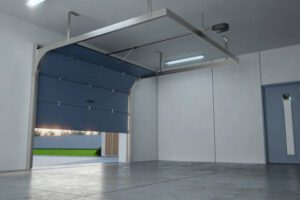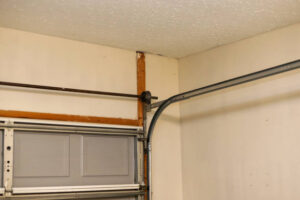Step-by-Step Guide to Selecting the Right Garage Door Springs
Selecting the right garage door springs is crucial for ensuring the longevity and safety of your garage door system. These components bear the full weight of the door, facilitating smooth and reliable operation. However, with various types of garage door springs available and considerations such as garage door springs replacement cost and durability, choosing the perfect fit can be daunting. This guide aims to demystify the process, highlighting the importance of understanding the mechanics behind garage door tension springs and extension springs, their lifecycle, and the factors influencing cost and performance.
The following sections will delve into the specifics of identifying and selecting the appropriate garage door springs for your system. Beginning with a thorough understanding of garage door springs types, including torsion and extension springs, the guide will cover the critical factors to consider, such as the cost of garage door springs, how long do garage door springs last, and the safety concerns associated with garage door springs danger. Practical steps on how to measure and select the right garage door spring, the significance of professional installation to ensure optimal performance and safety, and how to adjust garage door springs for balanced operation will be discussed in detail. Whether you’re looking at garage door springs for sale, pondering the cost to replace two garage door springs, or seeking advice on how to install garage door springs and cables, this comprehensive guide serves as an invaluable resource.
Understanding Garage Door Springs
What are Garage Door Springs?
Garage door springs are crucial components that help to counterbalance the weight of a garage door, allowing for smooth and controlled movement during opening and closing. These springs store mechanical energy when the door is moved, which is then used to assist in lifting the door, making it easier to operate despite its heavy weight.
Types of Garage Door Springs
There are two primary types of garage door springs used in modern systems: torsion springs and extension springs.
- Torsion Springs: These springs are mounted above the garage door opening and utilize torque to lift the door. Torsion springs are known for their efficiency and durability, providing a balanced lift that reduces stress on the garage door opener. They are typically made of heavy-gauge steel wire coils and are custom-wound to fit the specific weight and size of the door they are lifting. Due to their robust design, torsion springs are safer and have a longer lifespan compared to other types.
- Extension Springs: Older than torsion springs, extension springs are located on both sides of the door, attached at one end to the track support. They operate by extending and contracting as the door moves, which helps to lift the door against gravity. While they are cost-effective and simple to install, they do not offer the same level of balance and longevity as torsion springs and can be more dangerous if they fail.
How Do Garage Door Springs Work?
The functionality of garage door springs lies in their ability to store and release energy.
- Torsion Springs: When the garage door is closed, the torsion springs are tightly wound, storing energy. As the door opens, the springs unwind gradually, releasing the stored energy which assists in lifting the door. This system of winding and unwinding helps to maintain the balance and stability of the door throughout its movement.
- Extension Springs: These springs work on a principle of tension and release. As the garage door closes, the springs are stretched to their maximum capacity, storing energy. Upon opening the door, the stored energy is released, helping to lift the door. This system involves a series of pulleys and cables that ensure the door moves evenly.
Both types of springs are integral to the safe and efficient operation of garage doors, each playing a pivotal role in the ease of use and longevity of the system. Understanding the differences and mechanics behind each type of spring can help homeowners make informed decisions about their garage door systems, ensuring they choose the right springs for their needs and maintain them properly for optimal performance.
Factors to Consider When Choosing Garage Door Springs
When selecting garage door springs, several factors must be considered to ensure optimal performance and safety. These factors include the garage door spring color coding system, wire size, inside diameter, overall length, and wind direction. Each of these components plays a crucial role in the functionality and longevity of garage door springs.
Garage Door Spring Color Coding System
The color coding system for garage door springs is a critical aspect to understand, especially for torsion springs. This system uses two colors per spring: one to indicate the wind direction and another for the wire gauge. For instance, springs with red cones are typically right-wound and installed on the left side of the garage door, while those with black cones are left-wound and placed on the right side. This coding helps in quickly identifying the type of spring needed for replacement or repair.
Wire Size
Wire size refers to the thickness of the wire used to make the spring. It is crucial for matching the spring to the garage door’s weight and size. Accurate measurement of wire size is essential, as it affects the tension and the lifting capacity of the spring. Typically, the wire size can be determined by measuring the length of ten or twenty coils and comparing this measurement to a standardized chart.
Inside Diameter
The inside diameter of a torsion spring is another vital measurement. It can often be challenging to measure when the spring is still on the shaft, so it’s advisable to check for any markings on the winding or stationary cones. The inside diameter helps in fitting the spring correctly to the garage door mechanism, ensuring smooth operation.
Overall Length
Measuring the overall length of the spring is crucial for understanding its lifting capacity and ensuring it matches the door’s requirements. The length should be measured from one end of the spring to the other, excluding any end cones. This measurement helps in selecting a spring that can handle the door’s weight without excessive strain.
Wind Direction
Understanding the wind direction of the spring is essential for its installation and operation. The wind direction indicates how the spring coils and uncoils, which in turn affects how the door raises and lowers. Typically, a right-wound spring is installed on the left side of the door and vice versa. Incorrect installation regarding wind direction can lead to operational issues and reduced spring life.
By considering these factors, homeowners and technicians can choose the most appropriate garage door springs, ensuring safety, efficiency, and longevity of the garage door system.
Steps to Measure and Select the Right Garage Door Spring
Determine the Wind Direction
To accurately determine the wind direction of your garage door spring, observe the end of the spring. If the end points clockwise, the spring is left-wound; if it points counter-clockwise, it is right-wound. Most springs also have color-coded winding cones and cable drums to indicate wind direction—red for right-wound and black for left-wound. Additionally, a helpful trick is to make an “O” with your thumb and index finger; the left hand matches a left-wound spring, and the right hand matches a right-wound spring.
Measure the Wire Size
Measure the length of ten or twenty coils on the spring using a tape measure or caliper, then compare this measurement to a garage door torsion spring chart to determine the correct wire size. For accuracy, measure the coils in inches and refer to standardized sizing charts provided by associations like the Door & Access Systems Manufacturers Association.
Measure the Overall Length and Inside Diameter
The overall length of the garage door torsion spring should be measured from the outside of the first coil to the outside of the last coil, excluding any cones. This measurement is crucial as it affects the spring’s lifting capacity and should be noted to the nearest quarter inch. Additionally, measure the inside diameter of the spring from inside coil to inside coil, ensuring measurements are taken to the nearest 1/16 inch for precision.
Identify the Color Code
The color coding on torsion springs is essential for identifying both the wind direction and the wire size. Typically, red indicates a right-wound spring and black indicates a left-wound spring. Additionally, other colors on the spring may signify wire gauge, which helps in selecting the correct spring without needing to measure the wire size manually. Always ensure to distinguish the color indicating wind direction from the one indicating wire size to avoid confusion during replacement or installation.
Why Professional Installation is Important
Risk of Damage & Injury
Garage door springs are under high tension and, if mishandled during installation, can cause severe injuries or even fatalities. The risks include severe lacerations, broken bones, and amputations, which are common when the springs release energy violently. For instance, if a torsion spring is not unwound correctly, it could snap and cause significant damage. Additionally, incorrect installation can lead to the garage door falling off its tracks, risking serious bodily harm or fatality. Professional installation ensures that these components are handled safely and correctly, minimizing the risk of injury and damage to property.
Time Consuming
Replacing garage door springs is not only hazardous but also a time-consuming task that requires specific tools and expertise. A typical garage door weighs around a hundred pounds or more, making it cumbersome and dangerous to handle without the proper knowledge and equipment. Trained professionals have the necessary skills to efficiently manage the repair or replacement, saving homeowners time and reducing the risk of errors that could extend the time required to complete the task or necessitate additional repairs.
Warranty Considerations
Professional garage door repair services often come with warranties that cover both parts and labor, providing homeowners with peace of mind and protection against future issues. These warranties are crucial as they ensure that any problems encountered within a specified timeframe can be addressed without additional costs. Understanding the terms of these warranties, including what is covered and any limitations, is essential. For example, some warranties may not cover issues arising from normal wear and tear or may require that the garage door be maintained according to the manufacturer’s recommendations to remain valid. By opting for professional installation, homeowners can take full advantage of these warranties, ensuring that their garage door springs are not only installed correctly but also backed by a promise of quality and durability.
Conclusion
Through the comprehensive exploration of garage door springs, including their types, functionality, and the critical factors involved in selecting the right one, this guide serves as a crucial resource for homeowners. The understanding of torsion and extension springs, along with professional insight into mounting, operational mechanics, and safety precautions, equips individuals with the knowledge to make informed decisions. This knowledge not only enhances the longevity and efficiency of garage door systems but also underscores the importance of precision in selection and installation.
Given the complexity and potential risks associated with garage door spring installation and replacement, the value of professional assistance cannot be overstated. Employing the expertise of specialists ensures not only the optimal functionality and safety of your garage door system but also peace of mind. For expert installation or advice, consider reaching out to the professionals by calling Dynamic Garage Doors Inc at 877-213-9571. This action not only ensures the correct handling of your garage door needs but also aligns with the broader implications of maintaining a safe and efficient home environment.
FAQs
1. How can I figure out which garage door spring is needed for my door?
To select the correct torsion spring for your garage door, consider these key factors: Wire Size, Inside Diameter, Overall Length, Wind Direction, and the Weight of the Garage Door.
2. What is the significance of the color coding on garage door springs?
Each garage door spring is marked with either red or black to indicate the winding direction: red for right-wound springs and black for left-wound springs. Additionally, springs are marked with a DASMA color that indicates the wire size or gauge.
3. Is it necessary for both garage door springs to be of identical size?
In most cases (about 75%), it is advisable to use springs of the same size. This ensures that they wear evenly and can be replaced simultaneously.
4. What distinguishes EZ set torsion springs from standard torsion springs?
Standard torsion springs are tightly coiled when wound, preventing paint from entering between the coils. EZ Set torsion springs, on the other hand, have gaps between the coils when wound, allowing space for paint.






